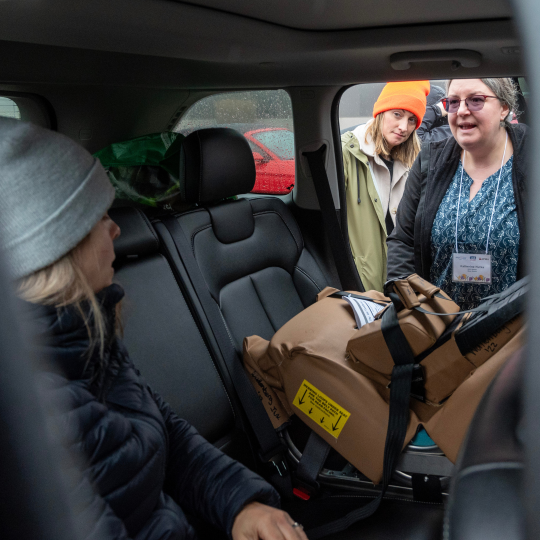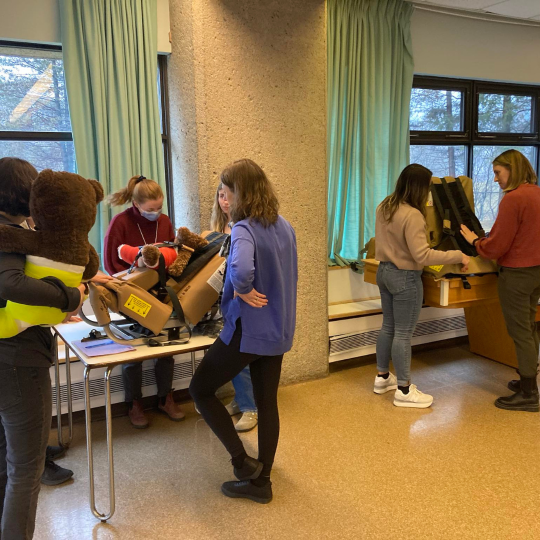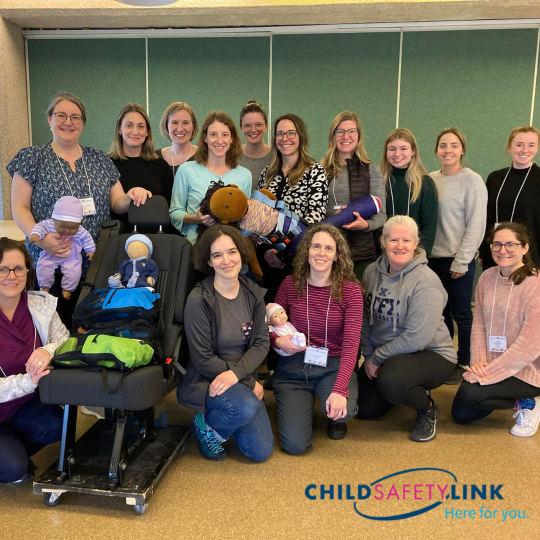Since 2002, IWK’s Child Safety Link has worked hard to prevent unintentional injury at home, on the road, and at play. One of their initiatives of note is their comprehensive passenger safety strategy which includes training for professionals who work with caregivers throughout Atlantic Canada. This year, Child Safety Link continues to assert its leadership in Canadian safety initiatives by offering the Safe Travel for All Children (STAC) program, focusing on the adaptive transportation needs of children with special healthcare requirements.
STAC was developed by the automotive safety program at the Indiana University School of Medicine and serves as a vital training resource for those who support families with medical, physical and/or behavioral conditions that affect a child’s safe transportation in vehicles including nurses and occupational therapists. Addressing the transportation needs of children with special healthcare needs remains a significant gap in passenger safety both domestically and internationally. International leaders in this field Dr. Marilyn Bull (Riley Hospital for Children in Indiana) and Tammy Franks (National Safety Council) came to the IWK in 2019 to mentor and support Kathrine Hutka (child safety link) and Julia Gates (OT specialty seating) to bring that knowledge Atlantic Canada. “The demand for this training has been high since we began to offer it in 2019,” Hutka says, “nurses and OTs have come from Ontario, Saskatchewan, Manitoba, and Quebec to take this training with us and in March we welcomed OTs from CHEO and Shriners. At this time, the IWK is the only medical institution in Canada that offers this training in adaptive transportation safety.”

While valuable information and data on this subject primarily emanates from the United States due to insufficient support in Canada, there remains a lack of adequate studies on the biomechanical effects of crashes on test dummies representative of children with special medical needs in any type of car seat.
In March 2014, the “Hospital Discharge Recommendations for Safe Transportation of Children” by the American National Highway Traffic Safety Administration highlighted the importance of hospital-based multidisciplinary child passenger safety programs to ensure proper child restraint practices upon discharge. This sort of policy is what Hutka would like to see at IWK, “Much like how we make sure newborn babies are buckled up correctly when families leave, we need robust policies that include training to meet the safe transportation needs of children who cannot safely use a standard car seat, booster seat or seat belt and instead need a safe adaptive solution.
After Katherine and Julia first were trained in 2017, they provided transportation assessments for eight families that first summer. They discovered that of those first families, three children were transported to the health centre on a caregiver's lap, unrestrained; Underscoring the urgent need for accessible resources for safe transportation for children whose needs cannot be met with a standard car seat, booster seat or seat belt.
STAC training is critical for health care professionals, enabling them to advocate for and implement necessary changes in transportation practices for children with special healthcare needs. However, effective change requires alignment between training initiatives and legislative support. Child Safety Link, along with Parachute Canada and the Child Passenger Safety Association of Canada (CPSAC) advocates for legislative changes to clearly permit the use of certified seats under CMVSS 213.3 and 213.5 for transporting children with disabilities or special health care needs, as well as specifying the use of adaptive (medical) seats certified in other jurisdictions for those whose needs exceed CMVSS-certified seats.

While this last spring SATC training is now complete with 14 health care providers from NS, NB, Ontario and Quebec (for a total of 68 people being trained in the last five years) enrollment opportunities will soon become available again, enabling further dissemination of crucial knowledge and skills in ensuring the safe transportation of all children.
For more information email katherine.hutka@iwk.nshealth.ca
